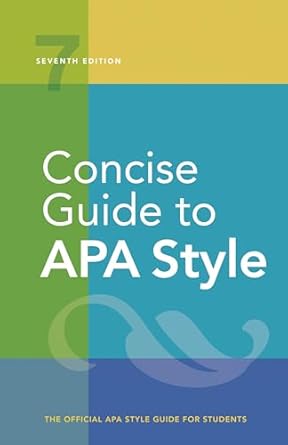[toc]
creating effective tables a guide for academic writing
Creating Effective Tables: A Guide for Academic Writing
Date: 6/5/2022
Concise Guide to APA Style: 7th Edition (OFFICIAL)
Page 160 Review
Understanding Tables in Academic Writing: A Detailed Commentary
This ebook excerpt provides a concise yet comprehensive overview of constructing effective tables in academic writing.
It focuses on key components and guidelines for ensuring clarity and accuracy.
Let’s delve into the details.
7.9 Components of a Table
The excerpt identifies three primary components of a table: headings, body, and notes.
* **Headings:** According to the text, “Tables may include a variety of headings depending on the nature and arrangement of the data.
All tables should include column headings, including a stub heading (heading for the leftmost column).
Some tables also include column spanners, decked heads, and table spanners (see Section 7.12).” This highlights the importance of clear and descriptive headings to guide the reader.
* **Body:** The body is the core of the table. “The table body includes all the rows and columns of a table (see Section 7.13).
A cell is the point of intersection between a row and a column.
The body may be single-spaced, one-and-a-half-spaced, or double-spaced.” The text emphasizes the structure and spacing of the table’s content.
* **Notes:** “Three types of notes (general, specific, and probability) appear below the table as needed to describe contents of the table that cannot be understood from the table title or body alone (e.g., definitions of abbreviations, copyright attribution).
Not all tables include table notes (see Section 7.14).” This indicates that notes are crucial for providing supplementary information and clarifying any ambiguities.
7.10 Table Numbers
Table numbering is crucial for easy reference.
The excerpt states: “Number all tables that are part of the main text (i.e., not part of an appendix) using Arabic numerals—for example, Table 1, Table 2, and Table 3.
Assign the numbers in the order in which each table is first mentioned in the text, regardless of whether a more detailed discussion of the table occurs elsewhere in the paper.
Write the word ‘Table’ and the number in bold and flush left (i.e., not indented or centered).
Tables that appear in appendices follow a different numbering scheme (see Section 1.14).” Consistency and adherence to this numbering system improve readability and organization.
7.11 Table Titles
The title of a table is a crucial element.
The excerpt emphasizes: “Give every table a brief but clear and explanatory title.
Write the table title in italic title case below the table number and double-space the table number and title.
Avoid overly general and overly detailed table titles.”
The excerpt further provides a helpful example illustrating different qualities of table titles:
* **Too general:** “Relation Between College Majors and Performance” – The rationale is “it is unclear what data are presented in the table.”
* **Too detailed:** “Mean Performance Scores on Test A, Test B, and Test C of Students With Psychology, Physics, English, and Engineering Majors” – The rationale is “The title duplicates information in the headings of the table.”
* **Effective:** “Mean Performance Scores of Students With Different College Majors” – The rationale is “The title is specific but not redundant with headings.”
This example effectively demonstrates the importance of finding a balance between brevity and informativeness.
Key Takeaways
This excerpt provides a solid foundation for understanding the essential elements of constructing tables in academic papers.
By adhering to the guidelines on table components, numbering, and titling, writers can create clear, concise, and informative tables that enhance the overall quality of their work.
The emphasis on avoiding overly general or overly detailed titles is particularly valuable, guiding writers to strike the right balance in their presentation of data.
The excerpt serves as a practical guide for students and researchers aiming to present data effectively and professionally.
In summary, crafting effective tables is a nuanced process that requires attention to detail.
The guidelines outlined in this excerpt serve as a valuable resource for ensuring clarity, accuracy, and consistency in academic writing.
By following these principles, writers can create tables that not only present data effectively but also enhance the overall impact of their research.
Buy full ebook for only $18: https://www.lulu.com/shop/american-psychological-association/concise-guide-to-apa-style-7th-edition-official/ebook/product-rmzpq54.html?page=1&pageSize=4
Creating Effective Tables A Guide For Academic Writing
Read more: Quoting & Citing: Master the Art of Academic Writing


Leave a Reply